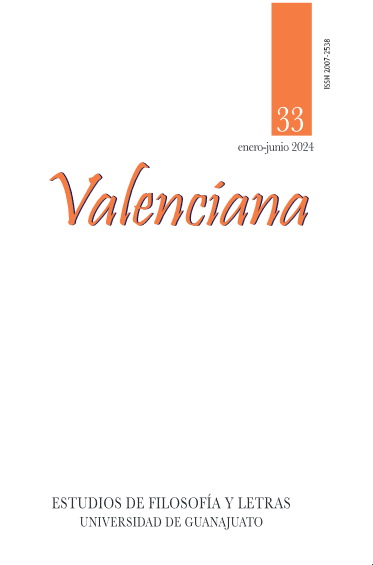Diagnosis of the philosopher species
Appreciations regarding his tempestuous character
DOI:
https://doi.org/10.15174/rv.v16i33.729Abstract
Este artículo esboza una suerte de impresión diagnóstica de la figura del filósofo. Aunque esta tarea pueda convocar a otras ramas del conocimiento humano, no constituye un estudio psicológico de personalidad ni mucho menos la propuesta para una nueva nosología. Si bien para el tema resulta inevitable señalar el conjunto cualitativo de rasgos, tendencias afectivas y disposiciones corporales usualmente asociados al filósofo, el desarrollo procura apegarse al terreno propiamente filosófico y, al principio, arrancarlo desde una perspectiva literaria. Si se habla de diagnosis, se hace en un sentido figurado más que clínico. Si se habla de especie, es desde la lógica aristotélica. Y para responder a la pregunta cómo es un filósofo, de entre todos sus exponentes, Nietzsche se erige como la principal guía, ya que fue él quien resumió con un adjetivo, de gran polivalencia metafórica, cómo es, cómo ha de ser, un filósofo: un intempestivo.
Published
How to Cite
Issue
Section
License
Copyright (c) 2023 Juan Carlos Hernández Pineda

This work is licensed under a Creative Commons Attribution-NonCommercial-NoDerivatives 4.0 International License.
Author(s) who publish in this journal do accept the next conditions:
According to copyright regulations, Valenciana does recognize and respect the authors’ moral right, as well as the right of property, which will be assigned to the journal for its diffusion in open access.
Valenciana does not charge authors for the submission, editorial process or publication in the journal.
All texts published and distributed by Valenciana (without exception) are supported by the license Creative Commons Attribution-NonCommercial 4.0 International (CC BY-NC 4.0), which allows third parties to use the publication as long as they mention the author and the first publication.
Authors can make other independent and additional contractual agreements for the non-exclusive use of his article published in Valenciana (e.g. including it in an institutional repository or in printed/electronic media), as long as it is explicitly clarified that the article was published for the first time in this journal.
For these purposes, authors must sign and send the letter of submission and copyright transfer form in a PDF file to this email address: revistavalenciana@gmail.com
This journal is under a license by Creative Commons Atribución-NoComercial-SinDerivadas 4.0 Internacional (CC BY-NC-ND 4.0)).











